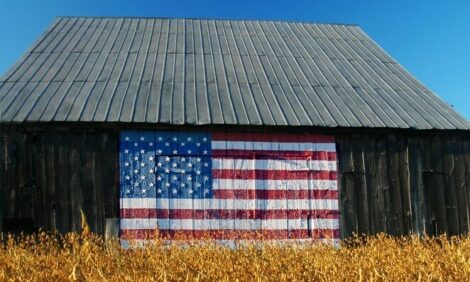



US Anger at Misleading Aussie Import Info
US - The National Pork Producers Council continues to be concerned about the continued attempt by Australian Pork Limited (APL) to mislead its members and Australian consumers about the economics of imported pork products.A recent article in Australia's Weekly Times APL Executive Director Andrew Spencer claimed that US pork producers receive “more than $100 billion” in subsidies.
A deliberately misleading figure that NPPC President Jill Appell says is exaggerated and a means of justifying a safeguard tariff on imported frozen pigmeat.
No Restrictions
The Australian government’s Productivity Commission conducted an investigation of the impact of imported pork on the country’s pork industry. A preliminary report was published during December 2007 and recommended that no restrictions be placed on US pork imports. A final report is due by the end of March 2008. Australian producers are alarmed. Their industry is in dire straights following a drought last year and a massive hike in feed prices. They want to see a 62 per cent tariff on pork imports because they feel the industry is being swamped by cheaper products that will eventually drive them out of business.APL does acknowledge the Productivity Commission findings and says that part of the its industry's problems make is globally uncompetitive. However, the country also has been dealing with historically high feed prices caused by drought and the rise in renewable fuels, which has added to the crisis.
NPPC says that if a 62 per cent tariff was imposed then Australian consumers would face a substantial rise in the prices of such products as bacon, salami and pepperoni.
“Australian Pork Limited’s refusal to accept the true causes of its industry’s problems only continues to delay action that could actually help Australian pig farmers,” says NPPC’s Appell.
Similar Safeguards and Support
The World Trade Organisation’s Agreement on Safeguards allows WTO member countries to impose for up to 200 days provisional safeguard measures if “a surge of imports causes or threatens to cause serious material injury to a domestic industry.”While the Organisation for Economic Co-operation and Development (OECD)found that in 2006 the total estimated support for the entire US agriculture sector was $95 billion, a significant proportion of that amount was for consumer support, including food stamps. Support for all US agriculture producers was only $29 billion; US pork producers received just $367 million in subsidies. By contrast, Danish and Canadian pig farmers received substantially higher producer subsidies, putting US imports at a competitive disadvantage.
An analysis of OECD figures presented to the Productivity Commission by NPPC shows that producer support per kilo of pork is about the same for Australian and US producers.
Keeping the Australian market open to US pork exports is being made possible in part because of the effective working relationship between NPPC and the National Pork Checkoff Board and their shared goal of increasing US pork exports.






